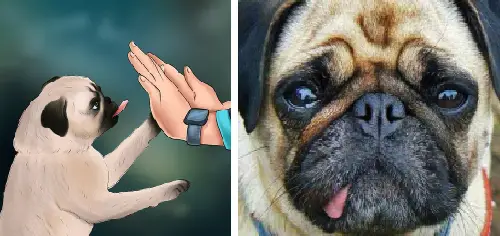Pugs are adorable companions, but like any dog breed, they require effective potty training to ensure a clean and harmonious living environment. Potty training a Pug takes patience, consistency, and positive reinforcement. Follow this step-by-step guide for success in potty training your Pug.
**1. Establish a Routine
Consistency is the foundation of successful potty training. Establish a regular feeding schedule for your Pug, which will, in turn, create predictable times for bathroom breaks. Pugs typically need to relieve themselves shortly after eating, waking up, or engaging in play.
**2. Choose a Designated Potty Area
Designate a specific area in your yard or outside your home where you want your Pug to go potty. Consistently taking them to this spot helps reinforce the association between the location and the act of elimination.
**3. Supervise Diligently
Keep a close eye on your Pug, especially during the initial stages of training. Supervision helps you catch them in the act and redirect them to the designated potty area. If you can’t supervise, consider crating your Pug or confining them to a small, puppy-proofed space.
**4. Use Positive Reinforcement
When your Pug successfully goes potty in the designated area, immediately reward them with praise, treats, or affection. Positive reinforcement creates a positive association with the desired behavior and encourages them to repeat it.
**5. Be Patient and Avoid Punishment
Accidents will happen, especially during the early stages of training. Avoid scolding or punishing your Pug for accidents, as this can create anxiety and hinder the training process. Instead, focus on reinforcing good behavior.
**6. Establish a Cue Word
Use a specific cue word or phrase when your Pug is eliminating. This could be something like “go potty” or “do your business.” Consistently using the same cue helps your Pug associate the command with the act, making it easier to communicate your expectations.
**7. Create a Potty Schedule
Set a consistent schedule for bathroom breaks. This is especially important during the initial stages of training. Take your Pug outside first thing in the morning, after meals, before bedtime, and at regular intervals throughout the day.
**8. Clean Accidents Thoroughly
Accidents may occur, and it’s crucial to clean them thoroughly to eliminate any lingering scent that might attract your Pug back to the same spot. Use an enzymatic cleaner to break down and neutralize odors.
**9. Monitor Water Intake
Control your Pug’s water intake, especially in the evening, to minimize the likelihood of nighttime accidents. However, always ensure they have access to water to stay hydrated.
**10. Transition to Freedom Gradually
As your Pug becomes more reliable in their potty habits, gradually increase their freedom within the house. Start with one room at a time and closely monitor their behavior. If accidents occur, consider going back to more controlled environments and reevaluating the training process.
**11. Consistency is Key
Consistency remains crucial throughout the entire potty training process. Stick to the established routine, positive reinforcement, and cues to reinforce good behavior. Consistent practices lead to lasting habits.
**12. Celebrate Successes
Celebrate every successful potty break. Whether it’s a puppy learning the ropes or an adult Pug mastering consistency, acknowledge their achievements with enthusiasm and rewards.
**13. Consult a Professional if Needed
If you encounter challenges or if your Pug seems resistant to potty training, consider consulting with a professional dog trainer or your veterinarian. They can provide guidance tailored to your Pug’s specific needs.
Potty training is an essential part of responsible pet ownership, and with patience, consistency, and positive reinforcement, you can successfully train your Pug. Remember, each Pug is unique, so be attuned to their individual needs and adjust your approach accordingly. A well-trained Pug is a happy and well-adjusted companion.


Leave a Comment